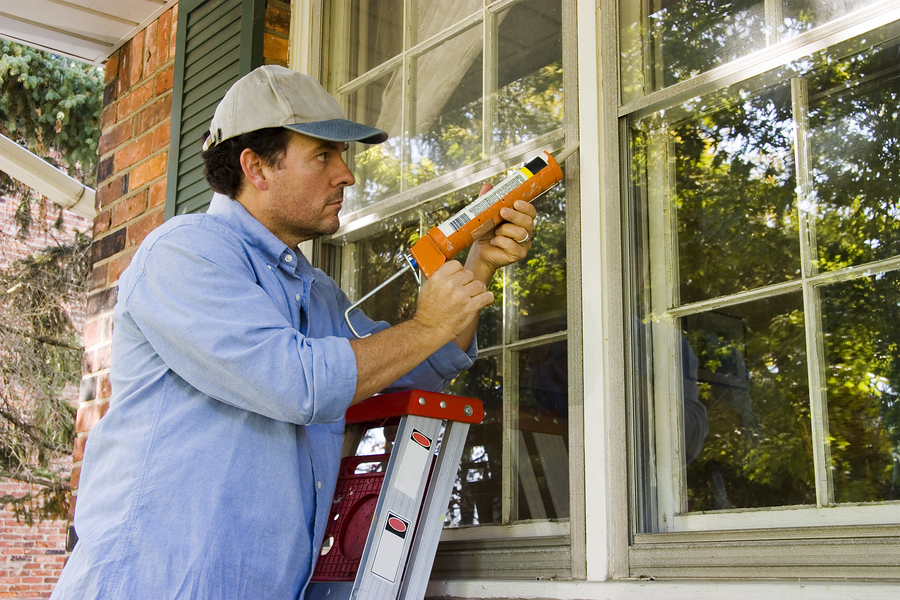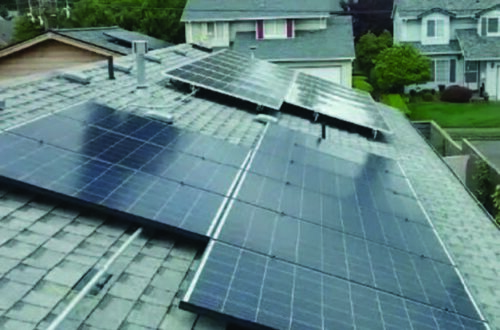Along with the changing seasons comes that inevitable dip in temperature which makes you want to snuggle under a blanket and avoid the frigid outdoors as much as possible. However, despite your efforts to shut out the cold weather, sometimes warm air escapes through windows, doors and other openings, thereby causing temperatures to drop inside.
Implementing the following heat-saving strategies this season will keep your home insulated against the elements and help your family stay cozy all winter long. Plus, these tips promote an energy efficient household which will save you money on electric bills!
Seal Out Drafts & Air Leaks
Drafts are among the most common culprits of heat loss during the cold weather months, and they can also drive up utility costs by 20%. Prevent these unwanted cool air currents from infiltrating your home by sealing any gaps found in doors, windows, floorboards, exhaust vents, exposed beams, fireplaces or stairways.
Keep Window Panes Covered
Closely woven, snug fitting blinds or drapery can result in 10%-25% energy savings and will deter warm air from leaking out the windows. Open the curtains each day in order for sunlight to filter through, and close them tightly at night to keep the heat inside. Make sure that whichever window treatments you choose are thermal lined.
Ensure the Attic is Insulated
Leaky ductwork in the attic constitutes 10%-30% of heating costs, so protect your home against cool air escaping through these ducts by insulating the attic. Opt for an adhesive insulator that won’t fall off whenever the door opens, or use the spray-on variety. Up-to-code attic insulations can decrease your monthly bill up to 30%.
Lower Water Heater Settings
The Department of Energy estimates the average household can save 3%-5% on utility costs per 10 degrees of reduced water temperature. Although scaling back on hot water does not sound appealing in the winter, the Department indicates no noticeable difference between 120-degree water and the 140-degree factory setting.
Wrap Pipes & Clean Gutters
Insulated pipes conserve even more hot water which prevents frozen plumbing and minimizes the discomfort of a cold shower. Energy efficient, pre-slit pipe foam is available at the hardware store. Another hazard, clogged gutters, form rooftop ice dams which causes water to seep inside, so consistently remove debris from your gutters.
Use a Programmable Thermostat
A pre-set thermostat keeps the central heating system at a constant temperature to block excess heat from being wasted. This results in approximately 20% energy savings and also saves you from manually fiddling with the unit. If this fixed setting makes your home too chilly, layering blankets is an economical and effective solution.
Enjoy the Fireplace in Moderation
Fireplaces should not be relied upon to warm your entire house, as their primary function is to provide decorative and aesthetic appeal. Use this fixture sparingly and make sure to close the damper once the flames are completely extinguished, as inadequately sealed damping systems allow heat to escape through the chimney.
Install Adjustable Shutters
Outdoor (or indoor!) shutters are ideal for controlling the amount of sunlight that penetrates your home’s interior. These window treatments protect against various weather conditions, attract natural warmth from solar rays during the day, and trap heat inside at night. In addition, utilizing shutters can save 25%-30% on utility bills.
Replace Furnace Filters Regularly
Air filters should be cleaned on a monthly basis and changed out when necessary. Built-up dirt and debris obstructs heat from freely circulating around the house which causes the furnace to work in overdrive. Routinely replacing these filters will extend your equipment’s lifespan, while improving energy efficiency by 10%.
Limit All Ventilation Fan Usage
Home experts at Realtor.com state that kitchen, bathroom and other other ventilating fans deplete household warmth in just one hour. To avoid this, turn fans off before leaving a room, limit overall usage, and regulate the humidity level at 30%-60%. Also, run all ceiling fans in a counterclockwise motion to direct heat toward the floor.
Although wintertime can bring to mind dreary images of trudging through snowdrifts, braving the wind-chill and shivering straight through your jacket, at least you can count on these cost-effective and eco-friendly strategies to keep you cozy indoors. Did we leave out any other heat saving tips? Share your own suggestions in the comment section below!







4 Comments
Adam Golightly
I liked what you said about how cracks should be sealed in doors, windows, floorboards, vents, beams, and fireplaces to prevent cold air from invading. My cousin has been pretty cold in the early morning and late evening when she comes home. Getting her home to stay warm with the help of a professional could be really useful.
azg george
Great tips for heating indoors in winter! I like the ideas, which are very much helpful. I like warm weather in winter. Actually I prefer electric fireplace, this article http://www.ventlessfireplacereview.com/2015/11/01/top-dual-fuel-ventless-gas-fireplace-review/ helps me lot to find my perfect heating unit.
Susan Place
I am curious about the ventless fireplace. Homes now are so tight is it really ok to have a ventless heat source?
Dean
Excellent tips listed here. Keeping the fans on low will help with circulating the heat that rises throughout the entire house.